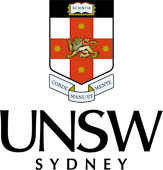BIOGRAPHY
After completing his undergraduate studies at the Universität Karlsruhe in Germany, Sven moved to Stanford University (USA) joining the research group of Douglas D. Osheroff and in 1997 was awarded his PhD in physics. As a postdoctoral researcher at Delft University of Technology (Netherlands), his research focused on atomic-scale electronics with the twofold aim of realising quantum electronics in silicon and establishing atomistic-device physics.He received a fellowship from the Royal Netherlands Academy of Arts and Sciences (KNAW) from 2000 – 2005 and then headed the Atomic-Scale Electronics Group at the Kavli Institute for Nanoscience.
In 2010, Sven was awarded an Australian Research Council Future Fellowship and joined CQC2T at University of New South Wales in January 2011. In the Centre Sven manages the experimental Silicon Qubit Environment and Interface program which aims to understand the impact of the environment on the orbital and spin properties of qubits, including an understanding of decoherence processes. To achieve this, cryogenic charge detection, direct electrical transport, noise, and pulsed high-frequency measurements and UHV scanning tunneling spectroscopy are carried out. Furthermore, the program aims to develop an optical interface to a Si qubit which will support simple long distance coupling schemes.
RESEARCH
As of January 2011, Sven starts a new experimental group at UNSW with two synergetic research lines based on his unique experience in transport metrology. One line resides with CQC2T, the other at the School of Physics.
The Solid State Quantum Computer
Sven’s team in Delft achieved several major milestones in the development of donor based quantum computation putting them at the forefront of this field (key members of the Delft group moved to UNSW). Their focus was on the study gated donor structures. The lab was the first to realize transport through a single dopant atom in a controlled manner. Furthermore, his team qualitatively explained the complex spectrum of the two charge states of a gated dopant atom in a nano-device. At the Centre Sven’s aim is to investigate phosphorus in silicon qubit architecture on the atomic level and understand decoherence pathways. The current research focuses on coherent charge transfer, orbital and spin relaxation processes, and optical adressing of dopants for with the goal of realizing prototype architectures for a solid-state quantum computer in silicon.
Atomic-scale Electronics
In addition to the work on donor based quantum computation, Sven works on atomistic-device physics and their applications. The research is aimed at atomic-scale transistors, quantum wires, and quantum circuits. Fundamental concepts of dopant distribution, device reproducibility, and transport models are determined by transport metrology in close consultation with leading semiconductor foundries. Besides conventional transistor applications work is done on complex-logic circuits. An example is a logic circuit that performs a full two-digit addition with 8 transistors in contrast to the 72 transistors required in a conventional circuit based on switches. The research is driven by the need of a low power alternative to conventional electronics and was realized for the first time in 2010 by utilizing an atomic degree of freedom in a CMOS transistor. The full addition is realized in a single-atom transistor by utilizing an orbital degree of freedom, concatenated to the next multi-valued complex-logic cell, and ultimately decoded back into binary to interface with conventional logic. This complex logic circuit in which a high-level functionality is implemented in the device is a molecular-electronics concept implemented in CMOS technology.
Experience
-
2011–presentProf, UNSW
- Website
- Article Feed
- Joined


